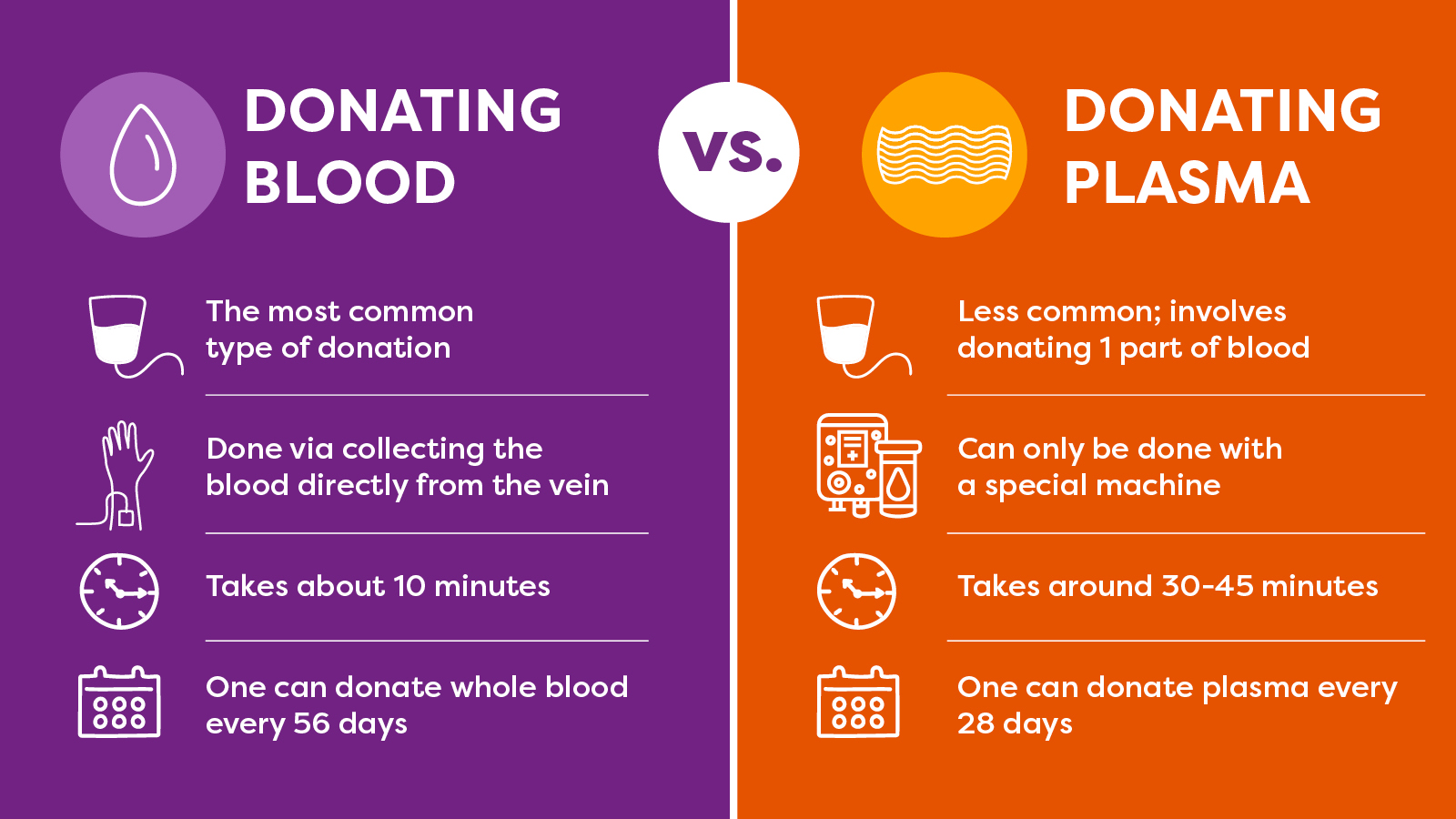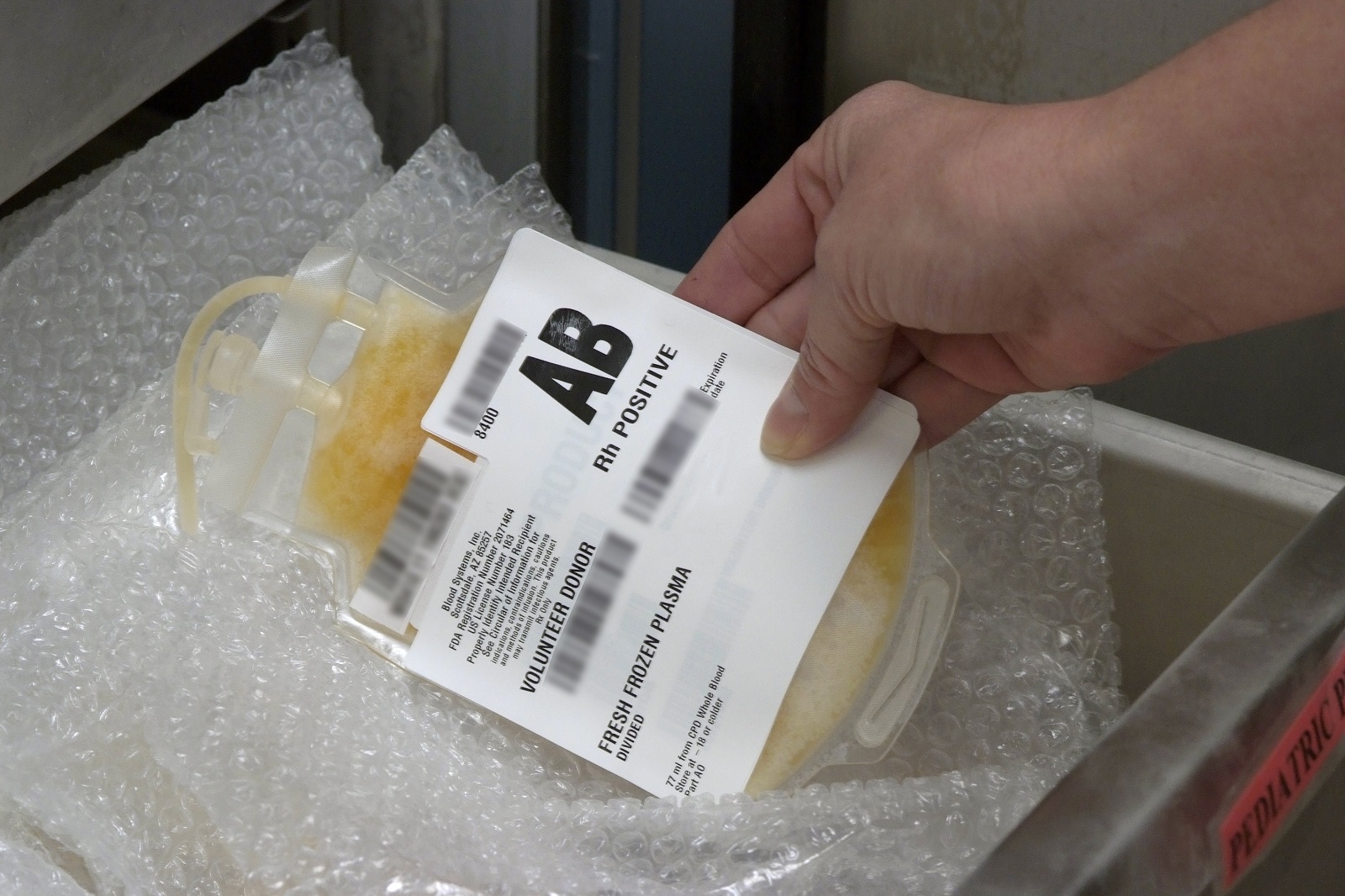When we talk about donating blood, we are usually referring to a whole blood donation, but there are several different types of donations you can give that can be transfused to patients. And donors will have a slightly different experience during each donation.
For example, the amount of time it takes to complete different donations can vary, such as when you’re donating plasma vs blood. During a whole blood donation, we collect one pint containing all the components of your blood: red cells, plasma, platelets and white cells. This process goes pretty quickly.
Thanks to modern technology, we can collect the different parts of your blood, like plasma, individually, using what’s called apheresis machines. You may be asked to make one of these types of donations depending on your blood type. This allows us to make the best use of your precious gift to help patients.
Because a special machine is used, a plasma donation takes a bit longer than a whole blood donation. Read on for the details of plasma vs blood donation.
Plasma vs Blood collection
Whether you’re donating plasma or blood, most of the process is the same. Before the donation, you’ll be asked about your health history and given a mini-physical. After your donation, we’ll ask you to relax for about 15 minutes and nosh on free snacks and water to replenish your fluids.
The difference in giving plasma vs blood occurs during the actual donation. Whole blood takes about 10 minutes, and during that time, we collect 500 ml (about a pint) while you relax in a chair. The entire process from the time you arrive until you leave takes about an hour.

Plasma donation takes about 90 minutes to two hours for the entire process, with the actual donation time about 30-45 minutes. A smaller needle is used to connect you to the apheresis machine that separates out your plasma. As it’s separated out, the rest of your blood components are returned to you, along with a saline solution.
Why do we collect plasma separately?
Vitalant collects plasma and other components separately because each type of donation can help different patients, depending on the situation. Whole blood can be separated into its different components like red blood cells and help save more than one life. If your blood type is O, your whole blood donation is especially helpful in emergency situations because doctors can use type O blood when they don’t know or have time to determine a patient’s blood type.
Plasma comprises 55% of your blood volume and carries all the other parts of your blood, so it plays a big role in keeping you healthy. Plasma donations help patients with massive blood loss caused by serious injuries, childbirth complications and severe burns. A plasma donation also helps those with clotting disorders and rare blood diseases.
If you are blood type AB, your plasma is in high demand because it can be transfused to a patient with any blood type.
Blood and plasma donations are always needed
Whether you give blood or plasma or another type of donation, keep in mind that every type is always needed. Blood products have a shelf life. Red blood cells must be transfused within 42 days. Plasma can be frozen for up to a year.
There are always patients in need, that’s why blood and plasma donations must be collected every day. When you donate on a regular basis, you help ensure patient care isn’t delayed. You can donate whole blood every 56 days and make a plasma donation even more often – every 28 days!

